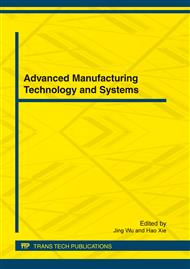p.93
p.99
p.104
p.109
p.115
p.122
p.127
p.132
p.137
Experimental and Numerical Modeling for Powder Rolling
Abstract:
There are multiple nonlinearities during the course of powder rolling and there is a difficulty for constructing its mechanical model and keeping the stability during the numerical calculation process. In addition, mechanical parameters determined by means of numerical simulation of rolling process are great significance both in theory and practical applications for the optimization of the process parameters and the design and manufacture of rolling equipment. Considering Material and Geometrical Nonlinearity during powder rolling, a constitutive model aiming to the powder rolling is constructed based on the Updated Lagrange (U.L.) formulation by which the basic theory of numerical simulation is deduced. The reasons are analyzed based on the experiments of powder rolling which led to the error during the numerical simulation and the effect of the different factors on powder rolling are analyzed. It is shown that the result of simulation is less than that of experiment and the whole result is dependable. The effect of various process factors is analyzed by the simulation of the rolling process and based on visual analysis of the simulation result, the primary and secondary factors affecting the relative density and the rolling force are obtained.
Info:
Periodical:
Pages:
115-121
Citation:
Online since:
March 2012
Authors:
Price:
Сopyright:
© 2012 Trans Tech Publications Ltd. All Rights Reserved
Share:
Citation:


